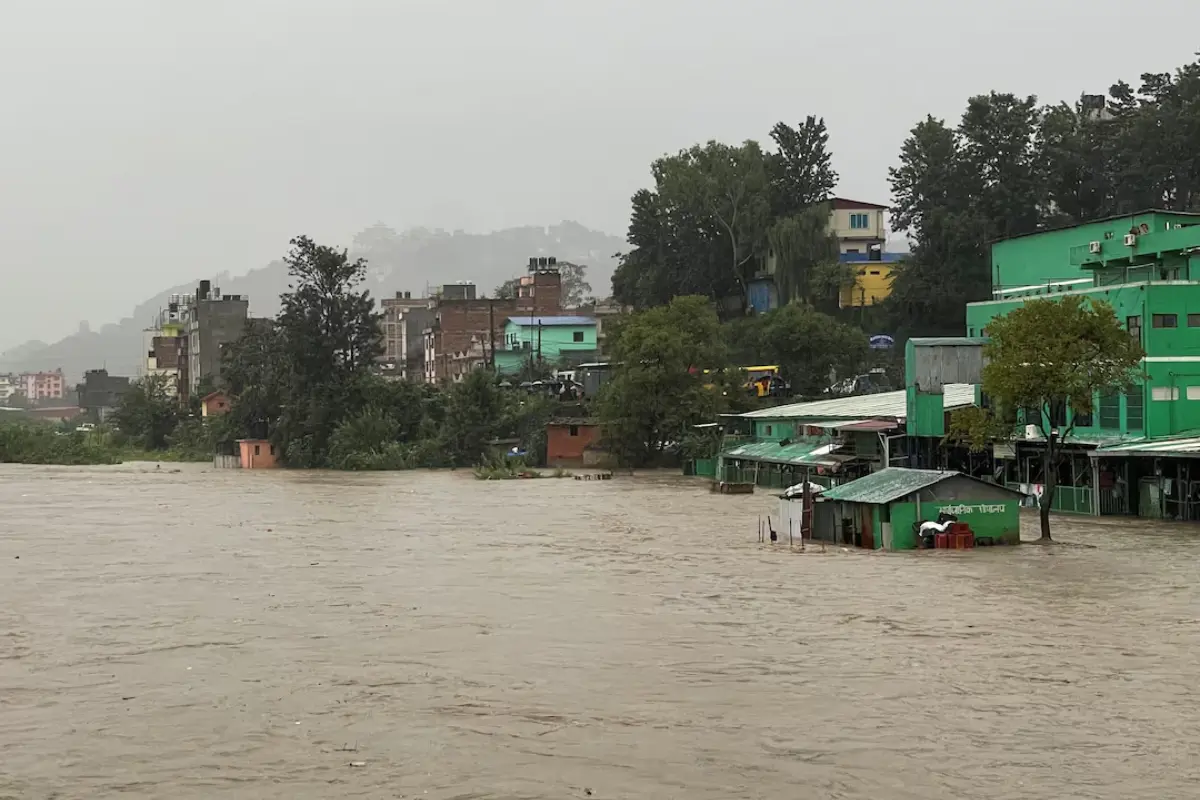
Photo Credit: REUTERS/Navesh Chitrakar
The devastating floods and landslides in Nepal have claimed the lives of at least 170 individuals, according to a recent statement from the country’s Home Ministry.
The calamities, exacerbated by relentless rainfall, have left numerous districts, including the capital, in a state of emergency.
Home Ministry spokesperson Rishiram Tiwari provided an update on Sunday, indicating that over 111 people have sustained injuries due to the floods and landslides.
Additionally, authorities have rescued approximately 4,000 individuals as they intensify their search and relief operations across the affected areas.
Efforts to aid those impacted have been ramped up, with security agencies deployed to assist in rescue missions.
The Nepali Army has utilized helicopters to airlift 162 people, either injured or stranded in the Kavre, Sindhuli, and Lalitpur districts.
Relief workers have distributed essential food supplies to those affected, and local health facilities are providing medical treatment to the injured.
Tiwari stated, “The government is prioritizing search, rescue, and relief efforts with full coordination among all concerned agencies. Blocked roads are being cleared, and reconstruction is underway.”
Roads that have been blocked due to landslides are being cleared as reconstruction efforts commence.
In light of the ongoing crisis, provincial governments, district disaster management committees, and local units are collaborating to address the situation.
Floods Cause 4.35 Billion Nepali Rupees Loss To Nepal’s Hydropower & Irrigation Systems
The floods have also severely impacted Nepal’s hydropower plants and irrigation systems, leading to an estimated initial financial loss of approximately 4.35 billion Nepali rupees (around $32.6 million).
Officials from the Ministry of Energy, Water Resources, and Irrigation reported that the continuous rain on Friday and Saturday caused damage amounting to 3 billion rupees ($22.5 million) to hydropower and transmission projects. Furthermore, river control and irrigation facilities incurred a loss of 1.35 billion rupees ($10.1 million).
The disaster has severely affected 11 operational hydropower plants, which have a combined generation capacity of 625.96 megawatts (MW).
This has resulted in a significant halt of around 1,100 MW in generation capacity, accounting for nearly one-third of the total capacity of the country’s operational power plants.
Fifteen additional hydropower projects currently under construction have also faced impacts.
As power plants and transmission infrastructure sustained damage, various regions experienced disruptions in power supply.
Kul Man Ghising, managing director of the Nepal Electricity Authority, warned that managing sufficient electricity for the upcoming winter could present challenges, as repairs and maintenance of the damaged facilities will take time.
While Nepal typically generates surplus hydropower during the monsoon season, the dry season yields only about one-third of the power needed.
The Ministry of Physical Infrastructure and Transport reported that 47 of the country’s 80 national highways remain obstructed, further complicating relief efforts and the movement of resources in the wake of the disaster.
Also Read: Iranian Agent’s Plot Leads To The Elimination Of Hezbollah Leadership In Israeli Airstrike
To read more such news, download Bharat Express news apps























